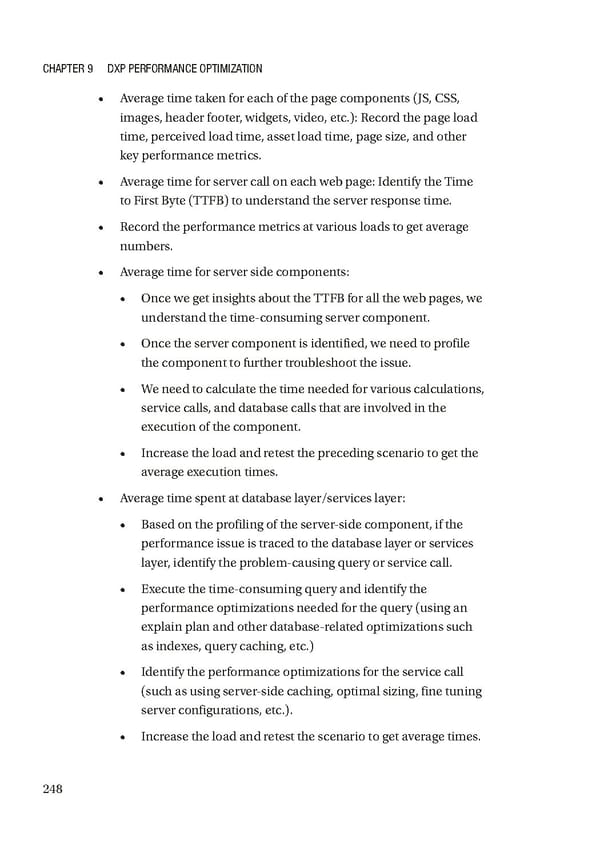CHAPTeR 9 DXP PeRfORMANCe OPTIMIzATION • Average time taken for each of the page components (JS, CSS, images, header footer, widgets, video, etc.): Record the page load time, perceived load time, asset load time, page size, and other key performance metrics. • Average time for server call on each web page: Identify the Time to First Byte (TTFB) to understand the server response time. • Record the performance metrics at various loads to get average numbers. • Average time for server side components: • Once we get insights about the TTFB for all the web pages, we understand the time-consuming server component. • Once the server component is identified, we need to profile the component to further troubleshoot the issue. • We need to calculate the time needed for various calculations, service calls, and database calls that are involved in the execution of the component. • Increase the load and retest the preceding scenario to get the average execution times. • Average time spent at database layer/services layer: • Based on the profiling of the server-side component, if the performance issue is traced to the database layer or services layer, identify the problem-causing query or service call. • Execute the time-consuming query and identify the performance optimizations needed for the query (using an explain plan and other database-related optimizations such as indexes, query caching, etc.) • Identify the performance optimizations for the service call (such as using server-side caching, optimal sizing, fine tuning server configurations, etc.). • Increase the load and retest the scenario to get average times. 248
 Building Digital Experience Platforms Page 261 Page 263
Building Digital Experience Platforms Page 261 Page 263